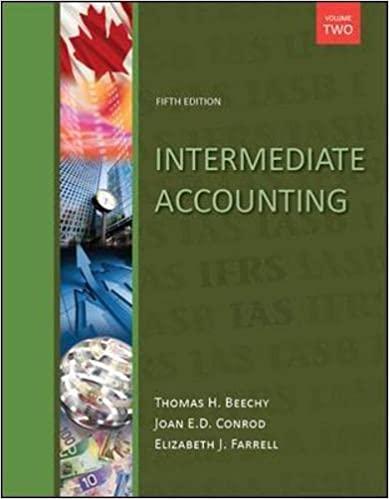1. A bank goes into a forward buy TT covering a fare bill for Swiss Francs 1,50,000 at ' 32.4800 due 25th April and covered
1. A bank goes into a forward buy TT covering a fare bill for Swiss Francs 1,50,000 at ' 32.4800 due 25th April and covered itself for same conveyance in the neighborhood bury bank market at ' 32.4200. In any case, on 29th March, exporter looked for crossing out of the agreement as the tenor of the bill is changed.
In Singapore market, Swiss Francs were cited against dollars as under:
Spot USD 1 = Sw. Fcs. 1.5076/1.5120
One month forward 1.5150/1.5160
Two months forward 1.5250/1.5270
A quarter of a year forward 1.5415/1.5445
what's more, in the interbank market US dollars were cited as under:
Spot USD 1 = ' 49.4302/.4455
Spot/April 4100/.4200
Spot/May .4300/.4400
Spot/June .4500/.4900
Compute the crossing out charges, payable by the client if trade edge needed by the bank is 0.19% on purchasing and selling.
2 In contrast with the customary assembling climate, overhead expenses in a JIT
climate all coming up next are valid aside from
A. is all the more handily followed to items.
B. is every now and again direct in nature.
C. incorporates lease, protection and utilities.
D. A large portion of the expenses are probably going to be aberrant in nature.
3 As creation increments inside the significant reach,
A. variable costs will shift on a for every unit premise.
B. variable costs will change altogether.
C. fixed costs will differ altogether.
D. fixed and variable expense remains something similar altogether.
4 Which of the accompanying assertions with respect to diagrams of fixed and variable expenses is valid?
A. Variable expenses can be addressed by a straight line where expenses are something very similar for each
information point.
B. Fixed expenses can be addressed by a straight line beginning at the root and proceeding
through every information point.
C. Fixed expenses are zero when creation is equivalent to nothing.
D. Variable expenses are zero when creation is equivalent to nothing.
5 All of the accompanying assertions with respect to planning is valid aside from
A. Planning assists administrators with deciding the assets expected to meet their objectives and
goals.
B. Planning is a vital fixing in great dynamic.
C. Planning is an accounting task
D. The focal point of planning will be arranging.
6 A 'immediate' cost is an expense that is arranged by:
A. conduct B. discernibility
C. controllability D. Significance
7 Which of the accompanying expenses isn't promoted as stock?
A. expenses of conveying completed products
B. industrial facility (producing) overhead
C. protection of industrial facility building and gear
D. production line amortization
8 An administration idea under which all supervisors and representatives at all phases of organization
activities endeavor toward better expectations and a diminished number of blemished units are called:
A. Consistent Improvement
B. Complete Quality Management
C. Hypothesis of Constraints
d. Complete Quality Control
9 The accompanying data has a place with John Manufacturing Company that utilizes a norm
costing framework:
Basic compensation rate:Rs.12 each hour
Fringe benefits: Rs. 2 every hour
Basic time: 2 hours for every unit
Allowance for down time: 0.3 hours per unit
Allowance for brakes: 0.2 hours per unit
In view of the above data, what is the standard direct work cost per unit?
A. RS.35 B. RS.28 C. RS.30 D. RS.32.2
10 Which of coming up next is a right recipe for figuring direct materials value fluctuation?
A. Standard amount bought (Actual rate - Standard rate)
B. Real amount bought (Actual rate - Standard rate)
C. Standard amount bought (Actual rate + Standard rate)
D. Real amount bought (Actual rate + Standard rate)
Step by Step Solution
There are 3 Steps involved in it
Step: 1

See step-by-step solutions with expert insights and AI powered tools for academic success
Step: 2

Step: 3

Ace Your Homework with AI
Get the answers you need in no time with our AI-driven, step-by-step assistance
Get Started


